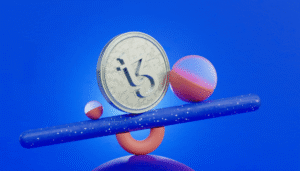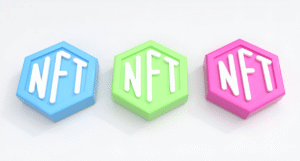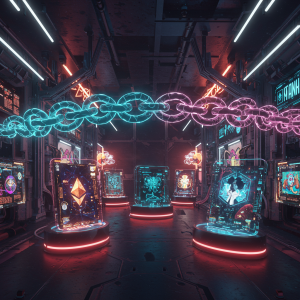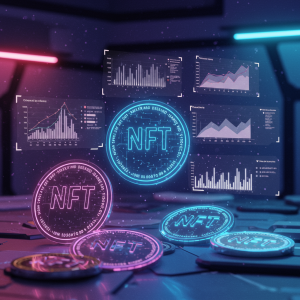NFT Social Tokens: Monetizing Creator Influence

The creator economy has undergone a remarkable transformation in recent years, shifting from platform dependence toward direct audience relationships. At the forefront of this evolution stands social tokens—digital assets that allow creators to monetize their influence while offering their communities ownership in their journey and success. These tokens represent the natural progression of creator-audience relationships in Web3, blending community building with economic alignment in unprecedented ways.
The Creator-Audience Relationship Reimagined
Traditional creator monetization relies heavily on intermediaries—platforms that facilitate connections while extracting significant value. Social tokens fundamentally alter this dynamic by establishing direct economic relationships between creators and their communities. Rather than simply consuming content, supporters can invest in a creator’s trajectory, aligning incentives across the ecosystem.
This shift transforms passive followers into active stakeholders whose interests align with the creator’s success. When designed thoughtfully, these tokenized communities create virtuous cycles where supporter actions benefit both the creator and the broader token-holding community.
Beyond Simple Crowdfunding
While social tokens might initially seem like sophisticated crowdfunding mechanisms, their potential extends far deeper into reshaping creator-audience dynamics. Unlike one-time transactions, social tokens establish ongoing economic relationships that evolve throughout a creator’s career.
The Rally platform demonstrates this evolution by providing infrastructure for creators to launch social tokens with minimal technical barriers. Their ecosystem has revealed how tokens transform community engagement when supporters gain tangible stakes in creator success.
Social tokens differ fundamentally from traditional patronage models by introducing shared upside. When a creator grows their influence, token holders potentially benefit through appreciation, creating communities that actively amplify and support creator work out of aligned economic interest.
Utility Layers in Social Token Ecosystems
The most successful social token implementations incorporate multiple utility layers that give tokens genuine functionality beyond speculative value. These utilities typically include:
Access mechanisms that use token holdings to gate exclusive content, experiences, or communities. These might operate through simple token ownership verification or more sophisticated threshold systems requiring specific holding amounts.
For creators interested in implementing token utility, our comprehensive social token strategy guide offers frameworks for determining which utility types resonate most with different audience segments.
Governance rights represent another powerful utility layer, allowing token holders to influence creator decisions ranging from content direction to collaboration choices. These governance mechanisms transform audience feedback from passive suggestions into formalized input channels.
Some creators implement tiered access systems where token holding amounts determine participation levels. This approach allows for broad community participation while reserving deeper involvement for the most committed supporters.
Token Economics and Sustainability
Creating sustainable token economies requires careful balance between accessibility and value preservation. The most thoughtful creator token projects implement deliberate tokenomics designed for long-term sustainability rather than short-term gains.
Considerations include initial distribution methods (ranging from free airdrops to tiered sales), token supply management (fixed versus inflationary), and token utility expansion roadmaps. The strongest projects typically reserve significant token allocations for future utility development, ensuring they can enhance value propositions as the community evolves.
Vesting schedules for creator allocations have proven particularly important for community trust, demonstrating long-term alignment rather than short-term profit seeking. Transparency around token distribution and intended uses remains essential for building the trust necessary for sustainable token communities.
Content DAOs and Collective Creation
The evolution of social tokens has led naturally toward Content DAOs (Decentralized Autonomous Organizations) that formalize collaborative creation between artists and their communities. These structures use tokens to coordinate resources, align incentives, and distribute rewards among participants.
Friends With Benefits exemplifies this approach, having evolved from a simple token-gated Discord into a sophisticated cultural DAO that funds creative projects, hosts events, and creates media. Their token serves as both governance mechanism and value capture system for collective output.
These structures represent perhaps the most revolutionary aspect of social tokens—the potential to transform traditionally solo creative careers into community-coordinated endeavors where economic alignment drives collective success.
Redefining Patronage Through Shared Ownership
Social tokens fundamentally reimagine patronage for the digital age. Rather than the hierarchical patronage models of previous eras, these systems create collaborative ecosystems where supporters become partners through fractional ownership of creator success.
This shared ownership model solves traditional creator economy challenges by reducing platform dependence, creating more predictable income streams, and allowing value capture from the appreciation of a creator’s influence rather than solely from content production.
For creators accustomed to traditional monetization approaches, transitioning to token models requires significant mindset shifts around community economics, value distribution, and collaborative decision-making. However, those who successfully navigate this transition often discover more sustainable and aligned growth patterns.
Integration With Other Web3 Primitives
The most innovative social token implementations integrate seamlessly with other Web3 mechanisms, including NFT collections, DeFi protocols, and metaverse environments. These integrations create robust digital economies around creator work rather than isolated token systems.
Some creators use limited NFT collections as higher-tier access mechanisms within broader token ecosystems. Others integrate with DeFi primitives to provide liquidity or yield opportunities for token holders. These sophisticated approaches transform creator tokens from simple access mechanisms into full economic systems.
The metaverse integration proves particularly promising, with creator tokens potentially serving as local currencies within creator-controlled virtual spaces. As digital environments grow more important for community gathering, tokens that function across virtual experiences may develop particularly strong network effects.
Challenges and Evolution
Despite their promise, social tokens face significant challenges before achieving mainstream adoption. Regulatory uncertainty around token classification remains perhaps the most significant barrier, with creators navigating complex compliance questions without clear frameworks.
User experience represents another crucial challenge, as current token systems often require technical knowledge beyond many creators and fans. Projects reducing these friction points through simplified interfaces and fiat on-ramps show the most promising adoption patterns.
Market volatility also presents challenges for community trust, particularly when tokens experience significant price fluctuations disconnected from creator activities. Education around token fundamentals versus market movements remains essential for sustainable communities.
The Future of Influence as an Asset Class
As social tokens mature, we’re witnessing the emergence of influence as a formally tradable asset class. This development suggests a future where investing in emerging creators becomes as common as investing in startups, with communities forming around creators partially based on their potential trajectory.
This evolution might eventually produce talent incubation DAOs specifically designed to identify, support and invest in promising creators through token mechanisms. Such structures would formalize the currently informal talent development processes while distributing both risk and reward.
Conclusion
Social tokens represent one of the most profound impacts of Web3 technology on creative careers. By enabling direct economic relationships between creators and communities, they fundamentally transform how creative work generates value and how that value gets distributed.
While still early in their evolution, these tokens suggest a future where creative careers benefit from community co-investment rather than platform dependence or traditional patronage limitations. For creators willing to embrace community ownership and collaborative economics, social tokens offer revolutionary possibilities for sustainable, aligned growth.
The most successful implementations will likely combine thoughtful token design, genuine utility development, and transparent community governance. As infrastructure continues improving and regulatory clarity emerges, expect social tokens to become standard components of creator strategy rather than experimental approaches.








